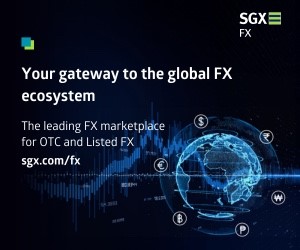MAS Proposes Digital Asset Framework Under Project Guardian
Posted by Colin Lambert. Last updated: July 3, 2023
The Monetary Authority of Singapore (MAS) has published a report proposing a framework for designing open, inter-operable digital assets’ networks top boost tokenisation in mainstream financial services, observing that while it “strongly discourages” speculation in private cryptocurrencies, it sees great potential in the digital assets’ ecosystem.
The report, Enabling Open & Interoperable Networks, was produced in association with private financial institutions and the Bank for International Settlements’ Committee on Payment and Market Infrastructure (CPMI). Alongside this, the MAS has formed a Project Guardian Industry Group, formed of 11 private institutions, to push the work forward – it has also welcomed Japan’s Financial Services Agency (FSA) as the first overseas regulator to join the project as an observer.
The report notes, that while much attention remains on speculation in unbacked digital assets, “…the real value in the digital asset ecosystem comes from the representation of real-economy and financial assets digitally in a tokenised form using smart contract technology to enhance the efficiency, accessibility, and affordability of financial services.
“Once represented as digital tokens, they can be exchanged readily and used to facilitate more efficient economic transactions across pre-trade to post-trade capital market activities,” it adds.
The report also considers how the CPMI-IOSCO principles for financial market infrastructures can be applied to evolving models of digital asset networks, taking reference from industry pilots launched under Project Guardian. “The report is part of MAS’ effort to ensure that emerging digital asset networks are underpinned by international standards which promote safe and efficient financial market infrastructure,” the central bank states.
Two key paths are being explored by Project Guardian, in the first, fixed income and foreign exchange, there are pilots in tokenised asset-backed securities, tokenised bonds, and tokenised bank liabilities. These include Standard Chartered, in collaboration with Linklogis, developing an initial token offering platform to enable the issuance of asset-backed security tokens listed on the Singapore Exchange. “The initial pilot demonstrated the feasibility of harnessing asset-backed tokenisation to enable investors to access yield-generating tokens tied to cashflows from underlying trade finance and working capital loans,” MAS says.
Elsewhere, DBS Bank, SBI Digital Asset Holdings, and UBS are executing a pilot repurchasing agreement (repo) with natively issued digital bonds. This aims to enable greater flexibility, operational efficiency, faster settlement, and increased efficiency for cross-border distribution and settlement of capital market instruments on digital asset networks.
Finally, MAS says Citi is testing the pricing and execution of digital asset trades on a distributed ledger. The initiative will leverage ledger data to improve post -trade reporting and analytics.
While MAS strongly discourages and seeks to restrict speculation in cryptocurrencies, we see much potential for value creation and efficiency gains in the digital asset ecosystem
In the second path, asset and wealth management, MAS says HSBC, Marketnode and UOB have successfully concluded a technical pilot on the issuance and distribution of a digitally native structured product. The pilot successfully demonstrated the potential for lower issuance and servicing costs, reduced issuance and settlement times, deeper customisation, and broader distribution for participants within the structured product chain, MAS says, adding that a further pilot will focus on the issuance of multi-currency and debt/equity linked structured notes under HSBC’s existing issuance programme, tokenised by Marketnode’s multi-asset issuance platform, and distributed by UOB for its wealth management activities.
Elsewhere, UBS Asset Management is launching a pilot to explore the native issuance of a Variable Capital Company (VCC) fund on digital asset networks. This aims to enhance fund distribution and facilitate improved secondary market trading of VCC fund shares, thereby reaping industry-wide operational efficiencies.
Finally, Schroders is partnering Calastone to explore the capabilities of a tokenised investment vehicle which can wrap and issue traditional investment securities, using VCCs. This could help achieve more cost-efficient investment allocation for retail and institutional investors while simplifying day-to-day operational processing.
“While MAS strongly discourages and seeks to restrict speculation in cryptocurrencies, we see much potential for value creation and efficiency gains in the digital asset ecosystem,” says Leong Sing Chiong, deputy managing director (markets and development), MAS. “This is why we are actively collaborating with the industry to foster a responsible and innovative digital asset ecosystem. As we enter this new phase of Project Guardian, we look forward to collaborating with fellow policymakers and industry practitioners to jointly develop effective frameworks to guide the sound development of future financial networks.”
Mamoru Yanase, deputy director-general of the strategy development and management bureau, FSA, adds, “[The] decentralised financial ecosystem continues to develop in complexity, and it is important to address emerging risks. On the other hand, blockchain technology including web3 has a potential to become a strong driver of innovation. We look forward to working with MAS, traditional financial institutions and fintech firms to further enhance our knowledge in this area.”



